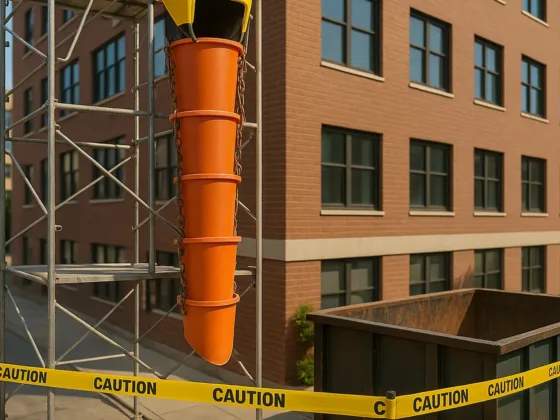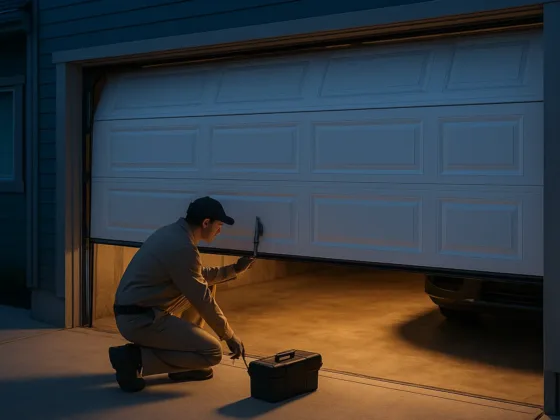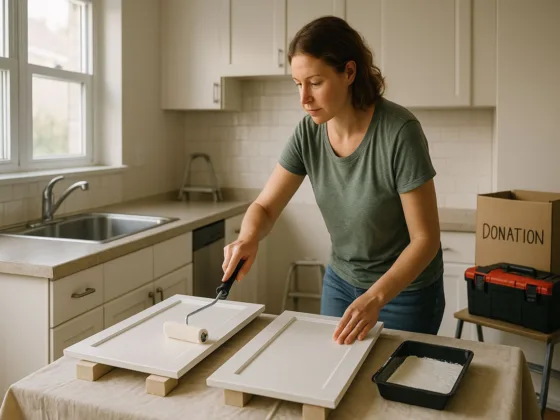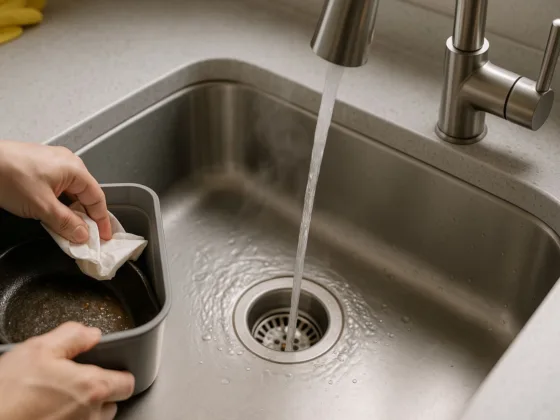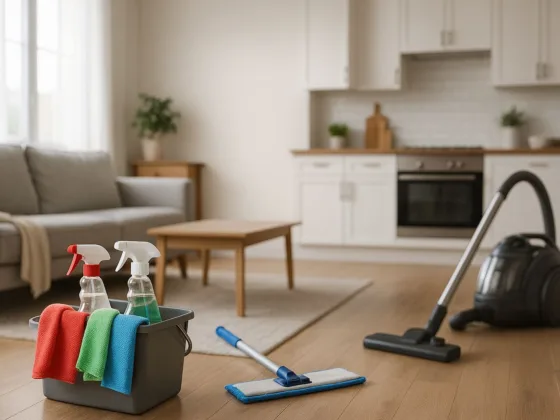Table of Contents Show
Pests don’t just appear. They follow crumbs, water, warmth—and gaps you can slip a coin through. Fix those and most “mystery” infestations fade. That, in plain English, is Integrated Pest Management (IPM). If you’re new to it, start here: the EPA’s Overview.
The playbook is simple: seal the tiny paths ants love, dry the damp spots roaches need, and put control only where pests travel. Less spray. Fewer surprises. Quieter house.
Why Eco-Friendly Matters
Families want results without trading off health. IPM doesn’t coat the whole room; it focuses on how pests live—then interrupts that. Treatments go on the route they actually use, in the smallest effective amount. For safety basics and re-entry timing, check the resources already linked above.
IPM, Step by Step — How it looks in a real home
Inspect
- Where to look: Run your finger along baseboards and window trims; crouch under the sink; slide a baking sheet under the stove and pull it forward; peek behind the fridge; check the spots where pipes, cables, and dryer vents punch through walls; look at door thresholds for slivers of daylight.
- Helpful gear: A small flashlight, an old makeup mirror for tight angles, your phone camera on video, and a few sticky cards tucked along wall edges or beneath the sink to see who’s visiting overnight.
For a step-by-step homeowner walk-through, see the Virginia Cooperative Extension—Home Grounds & Animals Guide.
Exclude
- Hairline gaps (1–3 mm): Run a neat bead of weather-resistant silicone along exterior sills and around utility penetrations. Inside, switch to paintable acrylic-latex + silicone so you can touch up trim. Wipe dust and let the surface dry first for a clean bond.
- Wider joints (≥6 mm): Press in foam backer rod so the sealant doesn’t slump, then tool the top bead smooth.
- Rodent routes: Pack copper mesh or steel wool into small holes, then lock it in with silicone or polyurethane. A ¼″ opening is enough for a mouse, so be fussy.
- Door bottoms: Fit an aluminum sweep with a rubber fin. Measure, cut with a hacksaw, pre-drill, and set it so the fin just kisses the floor rather than dragging.
- Weatherstripping: V-strip for the jambs, closed-cell foam for window stops. A quick wipe with isopropyl alcohol helps the adhesive grab.
- Screens & vents: Patch screen tears and back vents with ⅛″ hardware cloth to keep critters out while air still moves.
Sanitation
- Kitchen reset: Empty the toaster tray, vacuum the crumbs along the stove edges, and wipe counters before bed. Pour dry goods into tight-lidded bins so nothing scents the air.
- Moisture control: Watch for sweating pipes and slow drips. Tighten fittings, insulate where needed, and keep the cabinet base dry. Aim indoor humidity at 40–50% with a dehumidifier and confirm with a hygrometer.
- Trash & pet food: Use a bin with a snug lid and pick up pet bowls at night so you’re not feeding the midnight crowd.
How-to overview (step lists and checkups): New Mexico State University Extension—IPM Circular.
Targeted treatment
- Ants: After wiping trails with soapy water (1 tsp dish soap per cup), place pea-sized gel bait dots along edges near activity—don’t spray over baits.
- Roaches: Starve them first—no crumbs, no standing water. Then place small dots of gel bait inside cabinet hinges, under sinks, and behind appliances. Drop a couple of sticky cards nearby to watch numbers trend down.
- Rodents: Close ¼″ gaps, then set snap traps perpendicular to the wall where droppings sit. “Pre-bait” (unset) for one night so they trust the spot, then set traps and check daily.
Technique fundamentals: Clemson HGIC—IPM Overview.
Monitor
- Sticky cards in kitchens/baths/utility rooms; date them.
- Re-inspect weekly for a month, then monthly. Replace baits when consumed/dried.
Product/selection guidance: University of Georgia—Georgia Pest Management Handbook.
Handy kit to keep in a bin: caulk gun; 100% silicone for outdoors; paintable acrylic-latex + silicone for trim; foam backer rod; copper mesh; an aluminum door sweep; V-strip weatherstripping; utility knife; drill/driver; a sleeve of sticky cards; gel bait syringes; snap traps; dehumidifier; hygrometer.
A two-day win (micro-story)
Rainy week. Ants made a line from the back door to the dog bowl—textbook. We snugged a new door sweep, washed the trail with warm soapy water, and set three pea-sized bait dots right on their path. Night one: fewer ants. Night two: trail gone. It stayed gone once the gap stayed sealed and bowls were cleaned before bed.
Everyday Fixes That Make a Big Difference — With “How-To” Detail
- Improve indoor air quality: crack two opposite windows for 10–20 minutes while you clean; then run the range hood and bath fans for another 15–20.
- Tackle leaks and moisture control: tighten supply lines, replace a tired P-trap washer, and set your dehumidifier to 45% in basements.
- Adopt healthy cleaning: put flour, rice, snacks, and pet treats into airtight containers, and give the floor under large appliances a quick weekly pass with a vacuum wand.
- Do basic rodent-proofing: copper mesh + silicone in ¼″ holes; sweep on doors; hardware cloth on vents.
- Trim landscaping for pest prevention: keep mulch 6–12″ off siding; prune branches 3–4 ft from rooflines.
What “Targeted” Looks Like (quick examples)
- Ants. Clean the trail first. Then place bait on the edge they march—not in the middle of the floor. Skip baseboard sprays that push them off the bait. Most lines change in 24–72 hours.
- Roaches. “Starve + dry” before bait. No crumbs, no drips. Put tiny bait placements in cabinet hinges and under sinks. Two sticky monitors show the trend better than a flashlight does.
- Rodents. Seal ¼″ gaps (yep, that small). Set snap traps perpendicular to the wall where droppings sit. Pre-bait one night (unset) so they trust the spot—then set.
For health-protective handling tips (PPE, re-entry), see the Centers for Disease Control and Prevention: NIOSH—Pesticides and Reproductive Health.
Costs and Long-Term Value
Most households see fewer “call-backs” once the sources are fixed, which is why IPM stretches your budget over the year—not just the first visit. If you’re DIY-inclined, the starter materials below cover 80% of small problems.
| Approach | Typical Cost | Why It Saves Money |
|---|---|---|
| IPM inspection + exclusion plan | $150–$350 | Finds sources; fewer repeat visits and less product |
| Quarterly IPM service | $75–$125/visit | Monitoring prevents escalation and damage |
| DIY materials | $25–$80 | Caulk, door sweeps, traps, and bait for upkeep |
EPA consumer guidance backs this prevention-first approach—see the IPM Overview linked above.
When to Call a Professional (clear, transparent criteria)
- Sensitive households: Infants, pregnancy, asthma/COPD, immunocompromised family members, or older adults.
- It keeps coming back: You sealed, cleaned, baited, and monitored for 2–3 weeks, and activity still rebounds.
- High-risk pests: Bed bugs, German cockroaches, large rodent populations, or stinging insects in voids.
- Damage or safety risks: Wood that looks chewed or soft, sagging areas, or signs of gnawing near wiring (flickers, tripped breakers).
- Hard-to-reach spots: Inside walls/ceilings, tight crawlspaces, chimneys, or multi-unit buildings.
- Symptoms after DIY: Headache, dizziness, rash, or breathing irritation following any product use.
Before you book
- Snap photos of droppings, trails, or nests and jot down times/locations.
- Note what you tried—sealant, sweep, bait, traps—and for how long.
- Ask for an IPM-first plan: inspection → exclusion → sanitation → targeted treatment → monitoring.
- Request product labels/SDS and written re-entry guidance.
Modern IPM Providers (keep this current)
The providers below emphasize inspection, exclusion, sanitation, and monitoring before products:
Maintenance tip: Review this list quarterly. Replace or add one local, licensed provider that:
- Publishes an IPM workflow on their site (inspection, exclusion, monitoring).
- Discloses product classes and offers least-toxic options where appropriate.
- Provides follow-up monitoring and written re-entry instructions.
Quick Home Audit — With Fixes
| Check this | If you see it | Do this |
|---|---|---|
| Crumbs under appliances | Food source | Pull appliance, vacuum, degrease sides, place sticky monitor |
| Gap under exterior doors | Light visible | Install aluminum sweep with rubber fin; add V-strip on jamb |
| Under-sink moisture | Damp wood/odor | Tighten fittings, replace P-trap washer, run fan, set RH 40–50% |
| Pet food overnight | Full bowl | Feed on schedule, remove leftovers, wipe bowls |
| Branches touching roof | Bridge to attic | Prune 3–4 ft away; inspect soffit and screens |
Optional Add-Ons for Cleaner Air
Consider air duct cleaning or a HEPA air purifier if you are sensitive to odors or dust after remediation.
Myths vs. Facts: Eco-Friendly Pest Control
- Myth: “Natural products alone will fix it.”
Fact: The win comes from exclusion + sanitation + targeted placement. Products support the plan—they don’t replace it. - Myth: “One heavy spray will prevent everything for months.”
Fact: Broad sprays fade, and pests adapt. Sealed gaps, dry sinks, and bait where pests travel deliver durable results. - Myth: “If I don’t see holes, nothing’s getting in.”
Fact: Mice can squeeze through ¼″ openings; ants need even less. Door sweeps, weatherstripping, and copper mesh matter. - Myth: “Bait isn’t working unless I see piles of dead bugs.”
Fact: Good bait often works out of sight. Watch the monitors and the disappearing trails, not the spectacle. - Myth: “Essential oils make the house pest-proof.”
Fact: Some oils repel briefly. Long-term control still relies on cleaning, sealing, and correctly placed baits/traps. - Myth: “Eco-friendly means weak.”
Fact: IPM targets the cause and the corridor—it’s usually faster and more durable because it stops the cycle.
Final Thoughts
Start small; win fast; keep going. Pick one door, one leak, one appliance. Seal the gap. Dry the drip. Vacuum the crumbs. Drop two sticky monitors where pests actually travel and check them next week. You’ll spot the pattern—and once you see the pattern, you’ll stay ahead.
If the problem keeps bouncing back—or it’s bed bugs, German roaches, rodents in the walls, or a sensitive household—bring in a pro who leads with inspection and exclusion. You don’t have to choose between a healthy home and a pest-free one.
30-minute quick start (expanded)
- Seal one obvious gap. Daylight under a door? Fit an aluminum sweep with a rubber fin so it just “kisses” the floor.
- Two-minute ant reset. Warm soapy water across the trail; two pea-sized bait dots along the edge they use.
- Moisture triage. Paper towel under the sink for five minutes. Damp? Tighten fittings now, set a catch bowl, plan the washer swap.
- Crumb sweep shortcut. Empty the toaster tray; vacuum the stove sides; slide a microfiber cloth (wrapped on a ruler) under the fridge front.
- Rodent checkpoint. V-strip on a door that shuts too easily; copper mesh + a dab of sealant around any ¼″ cable hole.
- Containerize one shelf. Flour, rice, snacks, and pet treats into airtight bins—one shelf is enough to notice a difference.
- Vent and refresh. Two opposite windows for 10–15 minutes; bath fan for 15 minutes after showers.
- Place 3 monitors. Under the kitchen sink, behind the fridge, and in a utility area. Write today’s date on each.
- Yard edge pass. Pull mulch 6–12″ off siding; clip any branch touching roof or wall.
- Set a reminder. In 7 days: re-check monitors, refresh bait if eaten/dry, seal one more gap.
Tiny Wins Log (fill this as you go)
| Date | Problem spot | What you did | Result at day 7 |
|---|---|---|---|
| ____ | Back door gap | Installed sweep + V-strip | No light under door; ants down |
| ____ | Under-sink drip | Tightened P-trap + towel test | Wood dry; no roach signs |
| ____ | Pantry shelf | Moved snacks to airtight bins | No new trails |
FAQs
Yes—because you’re fixing causes first and placing products only where pests travel. For fundamentals, see the EPA’s IPM Overview linked above.
Ants/roaches often shift within 24–72 hours when you combine sealing, sanitation, and properly placed bait. Rodents can take a week of trapping + exclusion.
Totally. Move to inspection + monitoring and treat only as needed. It’s calmer on your home and your calendar.
They can repel a bit. Long-term control comes from sealing, cleaning, and targeted baits/traps—oils are optional, not core.
Last updated: October 4, 2025





